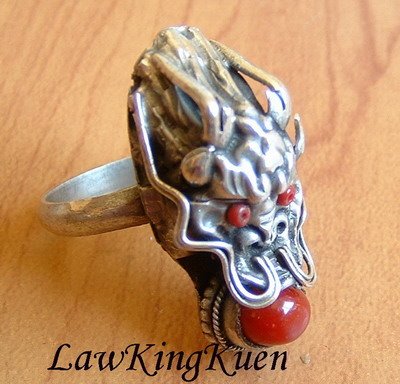Dzi bead (pronounced "zee") is a bead stone of mysterious origin worn as part of a necklace and sometimes as a bracelet. In several Asian cultures, including that of Tibet, the bead is considered to provide positive spiritual benefit. These beads are generally prized as protective amulets and are sometimes ground up into a powder to be used in traditional Tibetan medicine. Beads subject to this process have small "dig marks" where a portion of the bead has been scraped or shaved away to be ground into the medicine.
Beads that are broken are believed to have a diluted benefit, because they have taken the brunt of the force that it is assumed would have otherwise impacted the wearer.
Dzi stones are made from agate, and may have decorated symbols composed of circles, ovals, square, waves (zig zags), stripes, lines, diamonds, circles, squares, waves, and stripes and various other natural archetypal symbolic patterns. Colors will mainly range from browns to blacks with the pattern usually being in ivory white. Dzi beads can appear in different colours, shapes and sizes.
The number of "eyes" on the stone is considered significant. "Eyes" are the circular dot or eye-like designs, and depending on their number and arrangement, they represent different things.
Sometimes the natural patterns (usually "layered" swirls) of the agate can be seen underneath or behind the decorated symbols and designs, and sometimes not. Some dzi beads sport what are referred to as "blood spots" which can be seen as red dots in the white areas, and these are indicative of cinnabar content. This is highly desirable, but more rare. Another desirable effect is something called "Nāga skin" or "dragon skin," which refers to the cracking patterns on the surface of the bead, that simulates scales.
Dzi stones may have made their first appearance between 2000 BC to 1000 BC, in ancient Tibet: a few thousand were brought back by Tibetan soldiers from Persia. Dzis were crafted using agate as the base stone and then fabricated with lines and circles using unique ancient methods and techniques by Persian craftsmen. Scientific bead makers can now manufacture apparent dzi stones in bulk, but the techniques and methods used by ancient craftsmen still are not completely understood.[1]. Fear of the “evil eye” was taken very seriously by these people, so they created talismans with “eyes” on them as a “fight fire with fire” form of protection.
While the origin surrounding dzi beads is quite uncertain, it is socially accepted today that they are called "Tibetan beads". They are found primarily in Tibet, but also in neighbouring Bhutan, Ladakh and Sikkim. Shepherds and farmers pick them up in the grasslands or while cultivating fields. Because dzi are found in the earth, Tibetans cannot conceive of them as man-made. One reason the beads may be found near the surface in places such as freshly tilled fields, for example, may be because ancient monks were burned in funeral pyres (wearing the beads), and long after the remains were gone, the beads therefore remained, and were found at later dates. Since knowledge of the bead is derived from oral traditions, the beads have provoked controversy concerning their source, method of manufacture and even precise definition. In Tibetan culture they are believed to attract protector deities.

.JPG)

.JPG)
.JPG)
.JPG)
.JPG)
.JPG)

.JPG)
.JPG)
.jpg)

.JPG)
.JPG)
.JPG)
.JPG)
.JPG)
.JPG)
.JPG)
.JPG)



